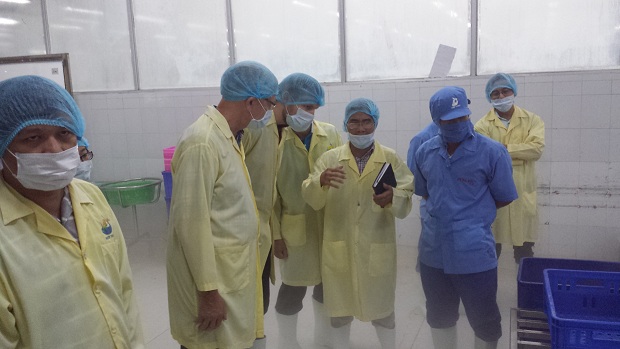Sunday, 14/12/2025 | 08:45 GMT+7
Small and medium-sized enterprises (SMEs) in Vietnam account for the majority in business community. In addition to over 40% of GDP contribution, these enterprises account for 40% of total energy consumption of the industry.
Outdated technology, negligence in energy saving solutions, and difficulty in getting the loans are the reasons why the energy consumption of SMEs remains high. It not only creates an economic burden to the enterprises, but also causes social negative impacts on the environment.
To help SMEs in Vietnam have the opportunity to invest in energy-saving activities, project LCEE has established a financial mechanism, which is called Green Investment Support Program. In particular, the Program specially focused on those SMEs in three sectors; including brickyard, ceramics yard and food processing.

The project's researchers indicates that the energy savings in the above three sectors in Vietnam is extremely potential. In the field of food processing, if possible solutions to save energy are applicable, businesses can save up to 15-25% energy. In particular, in the field of aquatic products processing, the potential of domestic enterprises can be up to 30% when compared with the best international practices. For brick and ceramics industries, handicraft production scale, small and piecemeal with traditional outdated technologies are the reasons for potential energy savings, which can be up to 30-70%.
Project LCEE expect financial support will help SMEs with loans for investment in energy saving measures. Then, it helps businesses reduce energy consumption, reduce energy usage costs, and get early return of capital investment.
Through the Green Investment Support Program, the LCEE Project gives the enterprises the opportunity to receive the loan with the amount ranging from VND 400 million to VND 4 billion. At the same time, the businesses can receive bank security up to 50% of the loan value.
By the end of the project, when the energy-saving activities are successfully implemented, the Project will rely on the energy savings level to determine the reward scale. Accordingly, enterprises and businesses have the opportunity to receive a payout of 10% to 30% of the loan value. The reward amount is directly deducted at the bank loan.
By Trong Tan








 Enhancing capacity to develop and implement energy efficiency policies at local level
Enhancing capacity to develop and implement energy efficiency policies at local level
 Bosch Vietnam Plant Benefits from Investment in Energy Efficiency
Bosch Vietnam Plant Benefits from Investment in Energy Efficiency
 Webinar 2: “Financial Support for Energy Efficiency Enterprises – Opportunities and Challenges”
Webinar 2: “Financial Support for Energy Efficiency Enterprises – Opportunities and Challenges”
 Vietnamese enterprises achieve green growth and cut costs through energy efficiency
Vietnamese enterprises achieve green growth and cut costs through energy efficiency
 Capacity Building for Program Implementing Entity
Capacity Building for Program Implementing Entity
 Promoting Energy Efficiency for Technical Staff of Brick and Ceramic Sector
Promoting Energy Efficiency for Technical Staff of Brick and Ceramic Sector
 Enhance Energy Efficiency Knowledge for Managers of Cement Industrial Enterprises
Enhance Energy Efficiency Knowledge for Managers of Cement Industrial Enterprises